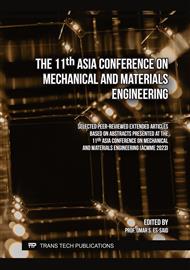p.31
p.37
p.45
p.59
p.67
p.85
p.95
p.103
p.109
Effects of Different Level Changes of Ultrasonic Energy on the Formation of Silver-Aluminum [Ag-Al] Intermetallic Compounds after Thermal Stressing and on the Formation of Kirkendall Voids
Abstract:
Kirkendall voids have always been a reliability issue in recent wire bonding technologies in semiconductor package using gold and copper wires. The unpredictable manifestation of these voids has paved the way for a lot of process improvements, parameter optimizations, and material improvements, aiming to alleviate the formation of voids. Predicting when these voids would likely to start to manifest themselves will give us an understanding as to how to improve wire bonding at time-zero, especially on the formation of the intermetallic coverage (IMC) at time-zero. Augmenting different levels of ultrasonic (US) energy at wire bonding gave us different IMC morphologies and thickness at time-zero, which were compared and analyzed through statistical analysis and through a mathematical model. The collective data of each US energy for both time-zero and after each thermal aging, showed when will Kirkendall voids would likely to occur on silver-aluminum [Ag-Al] intermetallics, and if these voids are detrimental to the integrity of the wire bond interphase [Ag3Al] or if it’s still acceptable within the device’s projected lifetime. The survival of the device at the 1000th HTS mark, reveals the reliability of using silver wires for automotive devices in the semiconductor industry today. Furthermore, the overall behavior of [Ag-Al] intermetallics in IM layer thickness can be predicted through an optimized set of parameters at time zero, but its overall numerical behavior can be quite different. Nevertheless, it has been proven through this thesis, that the [Ag-Al] intermetallics can survive 1000 hours of HTS, with different US energy level applications at time-zero.
Info:
Periodical:
Pages:
67-82
Citation:
Online since:
December 2023
Authors:
Keywords:
Price:
Сopyright:
© 2023 Trans Tech Publications Ltd. All Rights Reserved
Share:
Citation:



